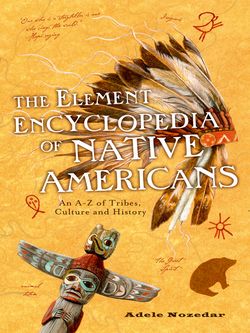Читать книгу The Element Encyclopedia of Native Americans: An A to Z of Tribes, Culture, and History - Adele Nozedar - Страница 117
CHOCTAW
ОглавлениеBelonging to the Muskhogean language family, the Choctaw were the largest tribe in that particular group. Originally they came from the southeastern U.S., including Alabama, Florida, Louisiana, and Mississippi. There are different theories as to the origin of the tribe’s name. It was possibly the name of a great chief of the tribe, possibly from a derivation of “river people,” possibly from the Spanish word chato, meaning “flat heads.” Because they allowed their hair to grow long, they were also called “long hair.”
An agricultural people, the Choctaw had a unique way of dealing with their deceased. The bones of the corpse were cleaned thoroughly and then placed in boxes which were stored in “bone houses.” The task of cleaning the bones was carried out by older men who let their fingernails grow especially long for the purpose. The Choctaw also belonged to the ancient mound-building cultures, and an ancient myth belonging to the tribe states that the people emerged from a mound in the ground, called Nanih Waiya.
In the 17th century the Choctaw arranged themselves into three independent groups: the eastern, western, and southern Choctaw. These different bands struck up different allegiances with the European settlers, although the American War of Independence saw all three Choctaw groups band together to take the side of independence against the British monarchy.
Because the Choctaw had embraced many of the practices of the white settlers, they were credited with the title of one of the Five Civilized Tribes in the 19th century. The other four tribes considered by the Europeans to be “civilized” were the Cherokee, Chickasaw, Creek, and Seminole. The Choctaw were also one of the tribes who kept slaves.
Nine treaties were made between the Choctaw and the U.S. Government; this resulted in vast tracts of former Choctaw land being ceded to the Government, and the tribe itself relocating to the Indian Territory in Oklahoma. The Choctaw had the dubious honor of being the first Native Americans to undergo such forced removal, although they did manage to negotiate a sizeable chunk of land for themselves. One of the features of the Choctaw, which no doubt led to their “civilized” status, was their system of self-governance, which divided the tribe into three, each with its own chief. There was also a Choctaw delegate to represent the tribe at the center of the U.S. Government in Washington, D.C.
After the Treaty of Dancing Rabbit Creek in 1831, the Choctaw were the first large non-European group to be given the status of U.S. citizens.
In the First World War, a number of Choctaw soldiers served in the U.S. Army. The Choctaw language is a difficult one for nonspeakers to decipher, and so was used as a code to transmit messages on behalf of intelligence officers in order to make sure the German enemy wouldn’t be able to discover the plans of the Allied armies (See Choctaw Code Talkers).
